Explosion of extreme weather mentions fans fear in politics of climate
Mentions of selective weather data and historical ‘records’ have raced up the charts like an Apollo mission rocket launch, creating confusion and alarm.
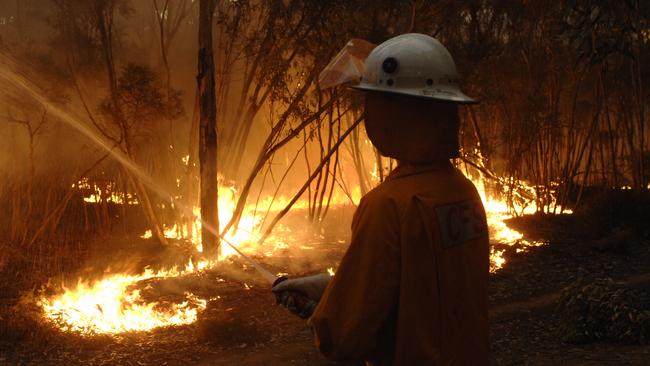
Climate science is the business of numbers and graphs and, above all, trends. Each year, weather agencies crunch the numbers to chart how average global temperatures compare with past years.
There is another graph, however, that says a lot about what has become a dominant trend in climate politics. It is the way in which extreme weather, like the famous hockey stick graph of runaway heating, has exploded on to the scene.
Analysis of how frequently extreme weather is mentioned in scientific and media circles has gone from nowhere only a few years ago, to race up the charts like an Apollo mission rocket launch. A search of the Scopus academic website similarly shows an exponential rise in the number of published papers that mention extreme weather. From just a handful of “extreme weather” references in university research 20 years ago, last year there was close to 2000 instances, with the Chinese Academy of Sciences leading the charge, but Australia’s prestigious University of NSW, University of Melbourne, and University of Queensland are all in the top 10.
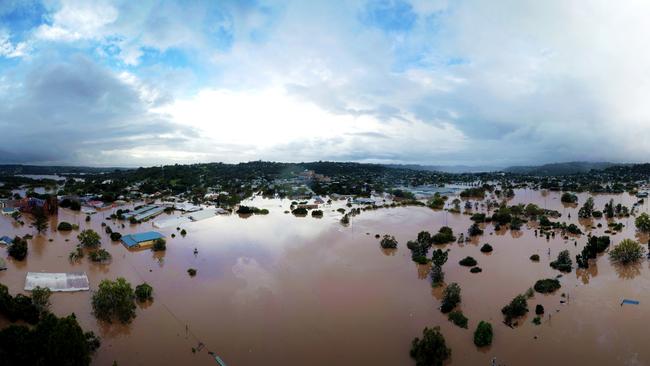
A review of the factiva archive of published material worldwide shows a similar explosion in mentions of extreme weather, since about 2015. The US, Britain and Australia have led the way, with our Bureau of Meteorology and the British Met Office prominent. In contrast, the Intergovernmental Panel on Climate Change has medium confidence but produced a spike in references to it in 2021 and 2022. The result is popular confusion about what is climate and what is weather.
Extreme weather has become a central part of the ritual new year declaration of how hot it has been in the age of a changing climate.
The year 2022 is expected to come in as the eighth-warmest year globally. In Australia, it was the 22nd-warmest year since national temperature records began in 1910. And, despite the floods that have swept through cities and caused havoc across large areas from Queensland to South Australia and now Western Australia, 2022 was the ninth-wettest year.
Contrary to popular fears of never-ending drought, BoM records show that multi-year rainfall deficiencies, which originated during the 2017-19 drought, have been almost entirely removed from the eastern states. The largest area of remaining multi-year rainfall deficiencies is in the Goldfields district of Western Australia, with smaller pockets in southwest WA and the north of the Northern Territory.
The cooler temperatures and wetter conditions in Australia have been due to consecutive La Nina weather patterns, a natural phenomenon driven by ocean temperatures in the Pacific. Consecutive La Ninas are relatively common. According to BoM, consecutive La Nina events have occurred in about half of all past events since 1900.
Three La Nina events in a row, as has just been experienced, are less common but the phenomenon has happened four times in the bureau records since 1900. Other occurrences were in 1954-57, 1973-76 and 1998-2001.
While much has been said about the impact of severe flooding, the flip side has been a restoration of water catchments, an ending of years of drought, bumper crop yields for farmers and a recovery in corals on the Great Barrier Reef to their highest levels since the Australian Institute of Marine Science started its long-term monitoring program in 1983.
For ecologists, floods are important to reconnect creeks and wetlands, and initiate breeding of fish, frogs and birds that bolster the food chain for reptiles and other larger fauna.
For climate catastrophists, attention instead is directed to what are called extreme events, sometimes from datasets that have only a limited history.
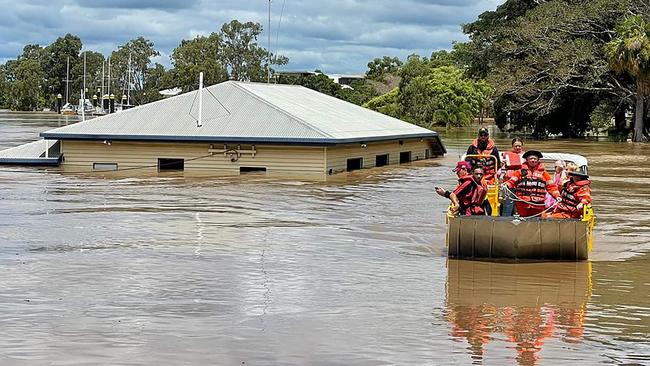
As the La Nina weather system degrades, attention has already swung to the possibility of a return to El Nino that would bring higher temperatures and a greater risk of bushfire. That is made likelier by the healthy vegetation growth due to an extended period of above average rainfall, as well as the fertilisation effect of increased carbon dioxide levels in the atmosphere. Although too early to predict with any certainty, an El Nino phase following a prolonged La Nina is a likely probability.
The takeaway is that natural variability continues to play its role in climate against a background warming trend. According to BoM, the background heating from climate change has elevated average Australian temperatures by more than 1.47C since 1910. This compares with a global average increase reported by the Intergovernmental Panel on Climate Change of 1.07C since the industrial revolution. According to BoM, the atmosphere can hold about 7 per cent more moisture for every degree of warmth, increasing the potential for more severe deluges as the planet heats up. This is the reasoning on which the now ubiquitous claims of extreme weather are built. But both the narrative of extreme weather and the quality of the temperature record itself are under constant challenge.
Extreme weather has replaced global warming as the totemic issue of climate change and has become an article of faith for campaigners seeking to galvanise public attention and push policymakers for change.
The IPCC’s most recent report on the science of climate change, AR6, says there is medium confidence that the frequency of extreme fire weather days has increased, and the fire season has become longer since 1950 at many locations. There is medium confidence that heavy rainfall and river floods will increase.
But in its annual report for 2022, the Climate Council has left no room for doubt. It says Australians are experiencing the impact of more frequent and severe extreme weather, with climate change a key influencer in the 2022 flooding emergency that swept through key parts of Queensland and NSW. The council says its community played an instrumental role in pressuring candidates in the 2022 federal election to cite their climate credentials.
“During the 2022 flooding emergency … our work with journalists, spokespeople and the media helped reinforce the narrative that climate change underpins the increasing frequency and intensity of extreme weather disasters such as this; putting pressure on the federal government for greater policy ambition,” the Climate Council’s report says. “We secured more than 1000 media hits and helped to cumulatively shift the discourse from no discussion around climate change at the onset of the disaster, to flooding being explicitly linked to climate as coverage progressed … We have also worked hard to communicate the role of climate change in driving extreme weather.”
In a message in the report, outgoing chairwoman Sam Mostyn says: “In a year filled with far too many ‘once-in-a-lifetime’ extreme weather events – including devastating flooding, record-breaking temperatures, heatwaves and fires across the world – the urgency of climate action is paramount.” This is a global trend. US climate scientist Judith Curry says she was an inadvertent contributor to explaining the potential harm of one degree of warming through a 2005 paper that identified a doubling in the proportion of Category 4/5 hurricanes since 1970. “For the first time, the connection was made between a devastating hurricane such as Katrina and a small amount of warming,” Curry writes in an essay posted on her Climate Etc website in December.
In retrospect, Curry writes: “Climate activists, the media and even scientists seized on the ‘extreme weather event caused by climate change’ narrative as being the ideal vehicle for ramping up the alarm about human-caused global warming … Every extreme weather event is now attributed to global warming, even extreme cold outbreaks and heavy snow.
“Scientists who should know better just can’t resist the opportunities for media attention and enthusiastically place blame on human-caused global warming. In spite of the fact that IPCC assessment reports find very little in the way of any contribution of human-caused global warming to extreme weather events.”
Curry is concerned about the psychological harm climate alarmism is causing to a generation of children: “Extreme weather events have become an increasingly important part of the climate alarm narrative since 2005, but kids didn’t start getting ‘psychologically injured’ until the climate communicators and ‘educators’ took this to the next higher level,” Curry writes.
“The timing of this started around 2017, following the increasingly apocalyptic rhetoric from UN officials and national leaders in support of the Paris Agreement and the coincident formation of the Sunrise Movement, Extinction Rebellion, etc. I don’t find much in the published literature about psychological injuries to children from climate change prior to about 2018; this is a very recent (phenomenon).”
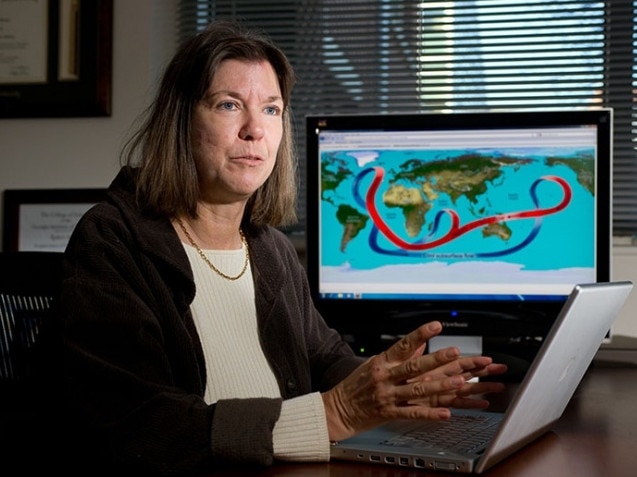
Analysis of available data shows that events being routinely touted as extreme have invariably happened in earlier decades. The paleoclimate record has extensive evidence of much more extreme weather. “No matter – never let the historical and paleoclimate data records get in the way of an alarming story that attributes the most recent disaster to fossil fuel emissions,” Curry writes.
Fellow US climate scientist John Christy, from the University of Alabama in Huntsville, best known for developing a satellite temperature record with colleague Roy Spencer, is similarly concerned.
“You have to give credit to those who in the climate establishment and the media, or whoever is behind all this, have been successful in scaring people about the climate,” Christy says.
“They don’t ever go back and talk to someone who actually builds these datasets and says, ‘Is that really the worst it’s been in the last 120 years?’. They just make those claims.”
Christy’s main concern is that a lot of surface temperature stations on which the global temperature data is built are spuriously affected by the growth of infrastructure around them.
In Britain there are similar concerns, including the fact the Met Office has placed a temperature measuring device halfway down the runway of a military air base that houses two squadrons of Typhoon fighter jets.
Australian scientist Jennifer Marohasy has been on a years-long quest to force BoM to better explain its temperature measurements. Her challenge to BoM to provide details about the effect of the switch from using mercury thermometers to platinum resistance probes in automatic weather stations will finally be heard in February by the Administrative Appeals Tribunal.
Marohasy and colleague John Abbot want BoM to release parallel data – temperature records taken by traditional thermometers alongside the new temperature probes when they were replaced – to confirm the compatibility of BoM’s automatic weather stations and probes with the historical record.
Marohasy is concerned that while other weather bureaus have also made the transition to temperature probes in automatic weather stations, BoM is the only weather bureau she knows of that does not average the one-second readings from its temperature probes.
The bureau has claimed in correspondence to Marohasy that it never averaged measurements from probes. BoM chief executive Dr Andrew Johnson told her the probes were specifically designed to have a long response time to mirror the behaviour of mercury in glass, making numerical averaging unnecessary. But according to Marohasy, the lack of numerical averaging despite the use of probes makes the BoM measurements unique in the world.
BoM has refused a Freedom of Information request for parallel data on several grounds, recently claiming the information did not exist in the format requested. This was after the request was revised on the advice of BoM, which said the initial demand was for too much information.
In an affidavit to the AAT, BoM’s chief data officer, Boris Kelly-Gerreyn, explains that rather than extensive records, the new FoI request was for reports that included the data.
Marohasy argues in her affidavit that in the absence of access to the parallel data – and the absence of any quality assurance and credible research into issues arising from the transition to temperature probes – no reliability can be placed on any claims by the bureau and/or other scientists using their data of record hot days, fewer extreme cold days or the claimed accelerated warming trend, or anything similar.
Marohasy says because of the difficulty in achieving consistency between temperature recordings from the newer temperature probes with traditional mercury thermometers, the Indonesian Bureau of Meteorology records and archives measurements from both devices, with a policy of having both types of equipment in the same Stevenson screen, or instrument shelter, at all its official weather-recording stations.
BoM has defended its methodology but so far has refused to hand over comprehensive data on the change for external analysis.
Marohasy says BoM has a policy of maintaining mercury thermometers with probes in the same Stevenson screen for a period of at least three years when there is a changeover. “This policy, however, is not implemented and mostly ignored,” Marohasy says in her affidavit to the AAT.
She maintains data was collected when many of the electronic probes were installed and this requires greater scrutiny. Marohasy says BoM has claimed there is no parallel data but simultaneously has erected barriers to the public accessing parallel temperature data by saying there would be high processing costs involved. BoM refused to waive the costs of satisfying the initial FoI request, claiming there was no public interest in the data sought.
“It is truly astonishing that the bureau should take the position that accurately evaluating the extent of temperature change during the past 100 years by fully understanding the effect of changes in instrumentation has no public interest,” Marohasy says. “At the same time the bureau is publishing reports and giving media interviews claiming that a temperature increase of 1.5C will have devastating consequences for the planet.”
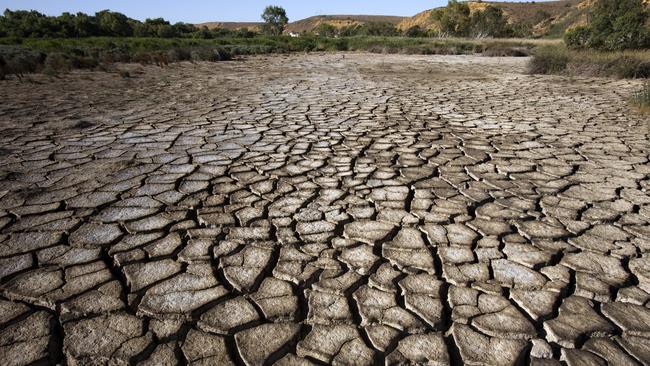
The dispute has more significance than being simply a local spat. The temperatures measured and recorded by the Australian Bureau of Meteorology contribute to the calculation of global averages. Marohasy says rather than averaging temperatures recorded by probes across a one- to 10-minute period, as recommended by the World Meteorological Organisation, the bureau is entering one-second extrema as the daily maximum and minimum values. She says this would bias the minima downwards and the maxima upwards. “Except that the bureau is placing limits on how cold an individual weather station can record a temperature, so most of the bias is going to be upwards,” she says.
Marohasy has gained some insights from limited documents she has received from BoM. She says the first temperature probe installed at Mildura recorded too cool relative to the mercury thermometer. This may have been the situation at other weather stations. We will know only if the data for the other 37 stations where parallel measurements were taken is made public.
A replacement temperature probe installed at Mildura on June 27, 2012, records too hot relative to a mercury thermometer. Again, Marohasy says, this may be the case at other weather stations, but we can know only if parallel data for the other stations in hot arid regions is made public and available for independent analysis.
With so much at stake, both financially and emotionally for a generation raised on a diet of climate extremism, full transparency is the least that can be expected from our public institutions.





To join the conversation, please log in. Don't have an account? Register
Join the conversation, you are commenting as Logout